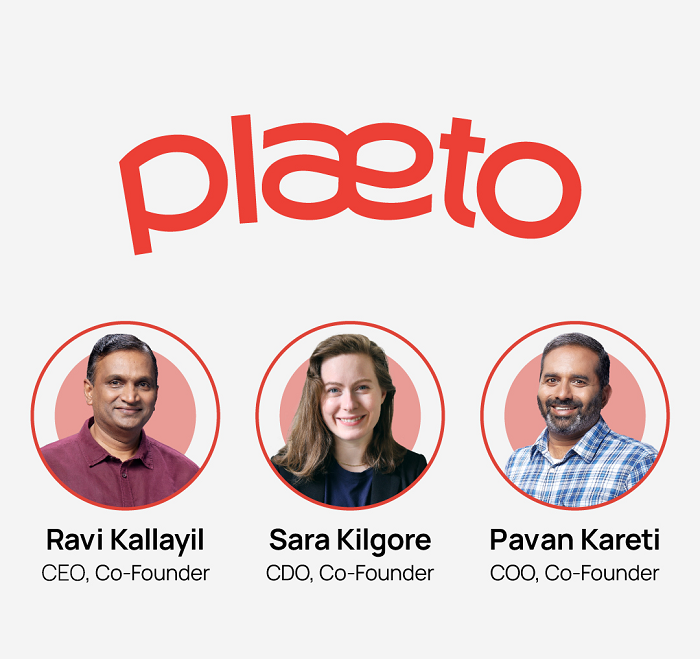Ravi Kallayil, Sara Kilgore and Pavan Kareti have a collective experience of three decades, working with global footwear brands such as Nike and Adidas. In 2020, the trio quit their dream jobs to build an innovative Made-in-India footwear brand, designed specifically for Indian children, at an accessible price. Since then, they have been doing extensive market research, R&D and building cutting-edge capabilities for product innovation.
The founders today officially announced the launch of Plaeto, India’s first D2C foot-health focused brand to design and deliver ‘shoes for growing feet’ of Indian children, aged three to eighteen. Based on deep insights from Plaeto’s Foot Morphology Research covering 1000’s of hours of research on Indian kids’ feet, the science-based shoes have been developed by an ace team of footwear designers and engineers from US, Italy and India.
Funded by marquee Angel investors, Plaeto was born with a purpose to give Indian kids world-class shoes that care for their feet and help them grow strong, active and healthy. The first-of-its-kind shoes are crafted with durable, tough, yet highly supportive materials, making them ideal partners for adventurous, active, busy and mischievous feet, or just letting kids be kids.
Introducing the innovation to the market, Ravi Kallayil, CEO & Co-founder, Plaeto, said, “In 2011, a 10-year-old child from Bangalore sent me a handwritten letter requesting a discount on a Nike shoe and that sparked off a long quest to figure out the answer to a simple question, ‘How can we make a great shoe for Indian kids at an accessible price?’ After nearly a decade of development work, I realised that the only way to make it happen was to go ahead and build it. In 2020, in the middle of the worldwide upheaval caused by the pandemic, I gave up my ‘best job in the world’ with Nike Innovation in the US and relocated to India to become an entrepreneur.”
“We saw an opportunity to bring innovative thinking to make the best-performing shoes designed for the Indian child. Additionally, as we built the shoe, we felt that it was our responsibility to do it in a way that leaves Planet Earth a better place for the kids to inherit,” added Ravi.
Sara Kilgore, Co-founder and Chief Design Officer, Plaeto (who heads company’s product design centre at Portland, USA), said, “Kids not having access to quality/comfortable footwear prevents them from playing altogether, which can be detrimental to their physical and mental health. With Plaeto, our mission is to bring the joy of play to every Indian child, through quality and sustainable footwear.”
Studies show that poorly designed footwear can lead to structural foot and body development issues for children. In addition to this, Plaeto’s research found that 30% of Indian children are wearing the wrong shoe size. “Given my background in psychology, and my knowledge of footwear design, manufacturing and engineering, starting Plaeto was the obvious next step. The health of the planet and the health of individuals are both paramount. People everywhere deserve quality products so that they can live a good life. For Plaeto, this starts with footwear,” stated Sara.
“To move the needle on planet impact, sustainable products have to be made more accessible to consumers. Plaeto is a demonstration of that idea,” said Bruce Kilgore, Plaeto’s Mentor. Bruce, the Ex-Head of Innovation for Nike and the designer of AirForce1, the largest selling franchise footwear in the world, has designed and developed footwear for the World’s best athletes including Michael Jordan in his 35year footwear design and innovation life.
The Bengaluru-based brand aims to impact at least 30% of the 300 million children in India through their product and programs. In terms of global expansion, the plan is to look at markets, such as Africa, where accessibility to good footwear is a challenge. The long-term strategy also includes propagating the idea of accessible sustainability to developed markets, such as Europe and the US.

